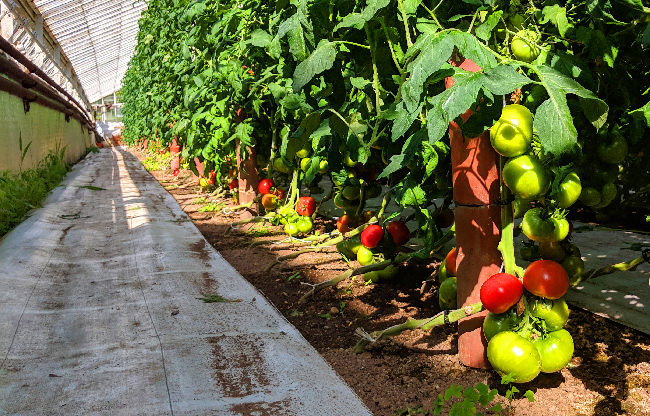Tomato Planting: A Labor of Love, but Worth it
By Laurie McBride
NYFB District 11 Representative Promotion & Education State Committee
Tomatoes, love them or hate them. If you are a 'mater hater you probably know a tomato enthusiast. There is something so remarkable about the perfect fresh tomato. It could be their juiciness, that slightly acidic yet sweet flavor or most notability their texture that you cannot find in off season tomatoes. For those sincere fans of fresh tomatoes, it’s very long between seasons.

Traditionally field tomato seedlings are started sometime in April and harvest can be expected in July or August. Nonetheless for that tomato enthusiast waiting until August (especially after shoveling out from a yet another March or dare say April snow storm) is not soon enough. Getting a jump on producing quality tomatoes ready to harvest in May is not easy. To put it bluntly tomatoes don’t do well in the cold and dark of March so the growing conditions will need to be manipulated. They will have to be grown in some type of protected culture such as a high tunnel, poly house or a glass greenhouse.
Variety selection is challenging because you are limited on what will work best with different growing conditions. Your goal is to optimize your production in a limited amount of square footage. You need to find an indeterminant tomato variety. These will keep growing and producing as long as conditions are favorable.
Growing inside any structure reduces the airflow so you want to find a variety that has some built in disease resistance. Another thing to take note of is germination/growth conditions. You’re in the early days of the year, will your plants thrive with less than 13 hours of daylight?
Varieties selected, now onto the soil. There are many options on the market to grow your tomatoes in. Some including containers, grow bags, rockwool, clay pebbles or the most traditional, planting directly in the soil. The main worry with any of these options is that they are free of disease, insects and weed seeds. Proper soil pH is vital for your plants to thrive. If the pH is in the optimal range, it ensures that the plants have the ability to take up the nutrients in the soil.
Water is the next necessity. You’ll need a consistent water supply for tomatoes especially when they start producing fruit, remember you want them juicy! Fertilizer is a must for consistent and uniform production. Calcium to start for good plant establishment. Nitrogen for proper plant growth. Potassium is vital for blossoms and consistent fruit production. The only way to ensure you are feeding the plants the prober fertilizers is by regular tissue analysis. Establishing a regular check-up allows nutrient deficiencies to be corrected before production is lost.
Tomato production is a labor of love and when done correctly the product is amazing and worth every step. Fingers crossed that spring comes early and we can all start planting those maters sooner than later.



